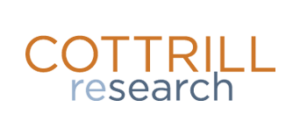Never has it been more apparent of how an advanced technology can fundamentally shake-up an entire industry than what is currently occurring in the consulting industry. Note the following recent examples:
- According to Disruptive Edge, consulting is being “fundamentally reshaped” by AI. The traditional organizational structure, such as the pyramid model, is comprised of a large number of staff (the base) performing tasks that are now handled by AI, with tiers of B-level managers in the middle and a small number of managing partners at the top. They propose a new “obelisk” model, which is taller with fewer layers and “more leverage at every level.” It is built around three human roles: AI facilitators, who are entry-level consultants “trained in the latest AI tools and data pipelines;” engagement architects (more experienced) who lead projects; and client leaders who establish and build relationships. AI-native boutiques are embracing this model.
- McKinsey, as reported by WSJ, is positioning itself more as a partner to clients rather than an advisor. Its work is increasingly outcome-based “where it is paid partly on whether a project achieves certain results.” They have reduced their head count and deployed ~12,000 AI agents that assist with tasks like PowerPoint deck creation and research. “Traditionally, a strategy project might have required a project leader, four consultants and a partner. Today, it might need a leader and two or three consultants—alongside a few AI agents and access to ‘deep research’ capabilities.”
- Business Insider reports EY is in the second year of its “All in” strategy of committing to develop AI-powered solutions for its staff and professionals. It “invests more than $1 billion each year in developing AI-first platforms and products, including 1,000 AI agents and the deployment of more than 100 internal AI applications.” AI-related consulting revenues rose 30% and with overall annual revenue growth at 4%.
- Perhaps the most unfortunate example at the moment of AI adoption is Deloitte’s fiasco with the Australian government. CFO Dive and multiple news sources report Deloitte delivered a document that contained multiple AI-generated errors, “including a fabricated quote from a federal court judgment and references to nonexistent academic research papers.” They agreed to partially refund the 440,000 Australian dollars and a revised version was delivered.
What Are the Expectations of Consulting Services Buyers?
As consulting firms structurally change their organizations, alter staffing levels, and implement new pricing strategies, it is essential for procurement to fully understand the changes happening in the industry. The IBM Institute for Business Value, with Oxford Economics, recently surveyed consulting services buyers to provide a firsthand glimpse of what executives expect from consulting partners in this age of AI. Here are highlights of the results (full results are a great read).
- Buyers want AI-powered services with 86% actively looking for services that incorporate AI and technology assets.
- AI is not replacing consultants. Findings show that 86% expect to spend more on consulting in the future and 94% expect AI to positively impact consulting efficiency. The average consulting spend is expected to climb above 4% of total revenue by 2026 up from today’s 2.8%.
- Buyers are looking for consultants who will be able to generate custom AI tools tailored to a specific client or situation using a depository of AI-enabled assets and deep expertise.
- Consulting buyers are looking for greater long-term value with 73% saying “the use of AI in consulting will make them more critical of the consulting services they buy.”
- Outcome-based pricing will become more important, “as will value realization tracking and the incorporation of asset licenses into consulting fee structures… Already, 73% of consulting buyers say they want new pricing models from vendors because of their use of AI.”

